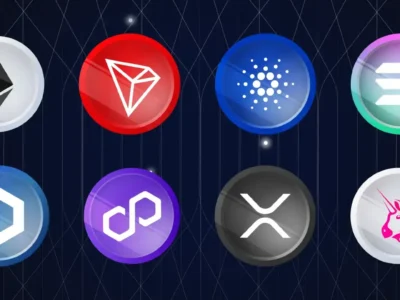Key Points
- Spanish, French, Portuguese, German, and Italian added
- Expands beyond English after 16 years of development
- Built with AI plus linguist fine-tuning
- Competing with Google and Apple’s new tools
For 16 years, Grammarly focused on one mission: making English writing clearer, more natural, and error-free. Millions of users came to rely on it for school, work, and professional communication. Now, the company is making its biggest leap forward yet.
Grammarly adds 5 languages, Spanish, French, Portuguese, German, and Italian. This long-requested feature is powered by advanced AI models and fine-tuned by expert linguists, bringing Grammarly’s editing magic to millions of new users around the world.
We just launched @Grammarly’s most-requested feature ever: writing support in five new languages!
Now you can get grammar and spelling corrections, paragraph-level rewrites, and instant in-line translations in Spanish, French, Portuguese, German, and Italian.
For years, our… pic.twitter.com/LMjKUZynVl
— Shishir (@shishirmehrotra) September 10, 2025
This is more than a translation upgrade. Grammarly can now detect grammar errors, fix spelling, rewrite full sentences, and even adjust tone in these languages. It also enables translation between six supported languages and 19 others, all inside the same platform.
Grammarly adds 5 languages with AI fine-tuning
Luke Behnke, Grammarly’s VP of enterprise product, revealed that this expansion was the “number one feature request” from users since the company’s early days. But scaling wasn’t as simple as repeating the English playbook.
Instead of hiring large teams of linguists for each new language, Grammarly turned to artificial intelligence.
The platform now runs on large language models (LLMs) that have been customized with the help of analytical linguists. This hybrid approach allowed the company to launch faster, while still maintaining accuracy and fluency.
#French Y can replace a prepositional phrase with à, chez, dans, en, and sur. Tu vas à Paris ? Oui, j’y vais. Are you going to Paris? Yes, I’m going there. #FrenchGrammar #LearnFrench #Languages. Click to learn more. https://t.co/F9OI9qSXW1 pic.twitter.com/EBzkg9P88Q
— Language Garage French / Français (@FrenchGarage) September 9, 2025
During the beta rollout to one million users, results showed strong adoption. Native speakers of Spanish, French, Portuguese, German, and Italian accepted Grammarly’s suggestions at rates similar to English users.
For many, it was an unexpected delight to see the familiar red underlines correcting text in their own language for the first time.
But the expansion comes as competition heats up. Google Search recently introduced AI-powered language support for five more languages, and Apple’s new AirPods now feature real-time translation.
Other tech players are also moving fast,Grammarly adds 5 languages with powerful new AI upgrade from Google’s Veo 3 upgrade in Photos to Microsoft’s Windows 11 25H2 update, the AI race is reshaping how users interact with devices every day.
Security and choice at the core
Another strength of Grammarly’s approach is its strong stance on data security. From the beginning, the company built its tools with privacy controls in mind.
Enterprise and education users automatically have training data collection turned off, while individual users can opt out if they prefer.
The system relies on a mix of in-house AI models and external LLMs. Users who want extra features can connect Grammarly with providers like OpenAI.
However, Grammarly ensures that these third-party models cannot access or train on user data. Instead, all sensitive data remains under Grammarly’s own infrastructure with strict safeguards.
This balance between innovation and privacy is key. As companies and schools adopt AI tools at scale, trust is just as important as accuracy.
Similar debates are happening in other tech areas, like Gmail’s spam filter bias, where AI decision-making is under scrutiny. Grammarly’s emphasis on control and transparency may help it stand apart.
Beyond grammar toward AI productivity
While the news that Grammarly adds 5 languages is a major step, the company’s vision is much bigger. In July, Grammarly acquired Superhuman, a fast-growing AI-powered email app.
Shortly after, it launched nine AI agents designed for students and educators, signaling a pivot toward a wider productivity ecosystem.
Grammarly wants to be more than a grammar checker. It aims to become a personal AI assistant that helps users write, communicate, and manage tasks across languages and platforms.
Whether it’s composing an email in French, rewriting a business proposal in German, or helping a student polish an essay in Spanish, Grammarly’s expanded toolkit could become an everyday necessity.
This ambition mirrors broader tech trends. Companies like NVIDIA, which just reported record Q2 revenue growth, are fueling the AI revolution with more powerful chips. Meanwhile, apps like TikTok’s DMs update are blending communication and AI-driven personalization.
Grammarly’s entry into this productivity race shows that the future of AI will not just be about search or chat, but about seamless integration across daily digital tasks.
The company hasn’t shared which languages are next. But Behnke hinted that demand is high in regions with global customer support centers, where multilingual communication is critical. That means languages like Hindi, Tagalog, or Arabic could soon join the platform.
With this expansion, Grammarly is no longer just an English editing tool. By bringing AI-powered corrections and translations to five of the world’s most spoken languages, it positions itself at the center of the growing competition in multilingual AI writing.







